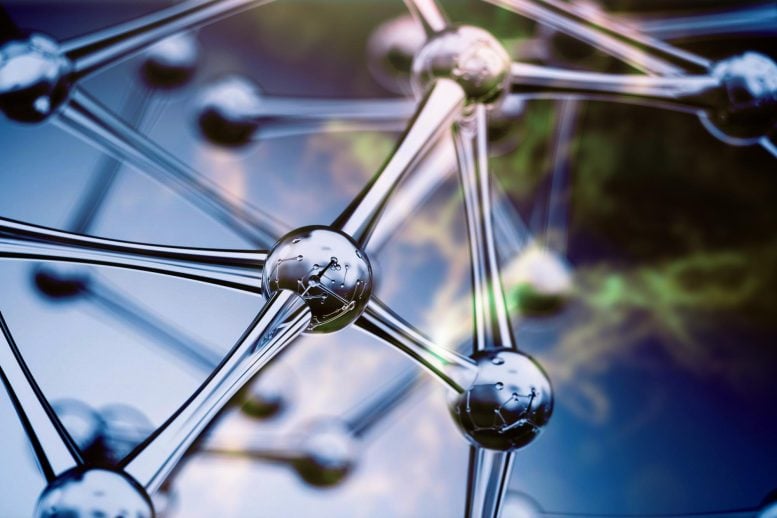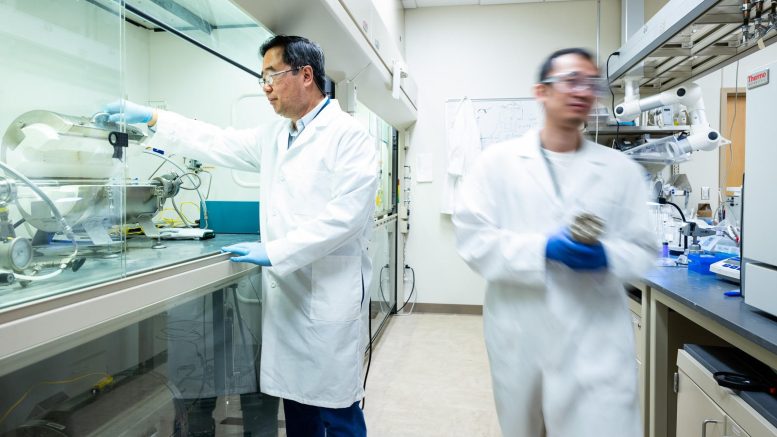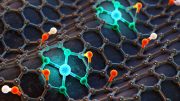
Argonne National Laboratory has pioneered a low-cost, cobalt-based catalyst that boosts efficient hydrogen extraction from water. This innovation is a key step towards achieving the DOE’s goal of significantly reducing green hydrogen production costs.
A new catalyst reduces the expense associated with generating environmentally sustainable hydrogen from water.
A plentiful supply of clean energy is lurking in plain sight. It’s the hydrogen that can be extracted from water (H2O) using renewable energy. Researchers are on the hunt for cost-effective strategies to generate clean hydrogen from water, with an aim to displace fossil fuels and battle climate change.
Hydrogen is a potent source of power for vehicles, emitting nothing more than water. It also plays a crucial role in several industrial processes, particularly in the production of steel and ammonia. The use of cleaner hydrogen in these industries would be extremely beneficial.
A multi-institutional team led by the U.S. Department of Energy’s (DOE) Argonne National Laboratory has developed a low-cost catalyst for a process that yields clean hydrogen from water. Other contributors include DOE’s Sandia National Laboratories and Lawrence Berkeley National Laboratory, as well as Giner Inc.
“A process called electrolysis produces hydrogen and oxygen from water and has been around for more than a century,” said Di-Jia Liu, senior chemist at Argonne. He also holds a joint appointment in the Pritzker School of Molecular Engineering at the University of Chicago.
Proton exchange membrane (PEM) electrolyzers represent a new generation of technology for this process. They can split water into hydrogen and oxygen with higher efficiency at near room temperature. The reduced energy demand makes them an ideal choice for producing clean hydrogen by using renewable but intermittent sources, such as solar and wind.

Senior chemist Di-Jia Liu inspects a catalyst sample inside a tube furnace after heat treatment while postdoc Chenzhao Li carries a pressure reactor for catalyst synthesis. Credit: Argonne National Laboratory
This electrolyzer runs with separate catalysts for each of its electrodes (cathode and anode). The cathode catalyst yields hydrogen, while the anode catalyst forms oxygen. A problem is that the anode catalyst uses iridium, which has a current market price of around $5,000 per ounce. The lack of supply and high cost of iridium pose a major barrier to the widespread adoption of PEM electrolyzers.
The main ingredient in the new catalyst is cobalt, which is substantially cheaper than iridium. “We sought to develop a low-cost anode catalyst in a PEM electrolyzer that generates hydrogen at high throughput while consuming minimal energy,” Liu said. “By using the cobalt-based catalyst prepared by our method, one could remove the main bottleneck of cost to producing clean hydrogen in an electrolyzer.”
Giner Inc., a leading research and development company working toward the commercialization of electrolyzers and fuel cells, evaluated the new catalyst using its PEM electrolyzer test stations under industrial operating conditions. The performance and durability far exceeded that of competitors’ catalysts.
Important to further advancing the catalyst performance is understanding the reaction mechanism at the atomic scale under electrolyzer operating conditions. The team deciphered critical structural changes that occur in the catalyst under operating conditions by using X-ray analyses at the Advanced Photon Source (APS) at Argonne. They also identified key catalyst features using electron microscopy at Sandia Labs and at Argonne’s Center for Nanoscale Materials (CNM). The APS and CNM are both DOE Office of Science user facilities.
“We imaged the atomic structure on the surface of the new catalyst at various stages of preparation,” said Jianguo Wen, an Argonne materials scientist.
In addition, computational modeling at Berkeley Lab revealed important insights into the catalyst’s durability under reaction conditions.
The team’s achievement is a step forward in DOE’s Hydrogen Energy Earthshot initiative, which mimics the U.S. space program’s “Moon Shot” of the 1960s. Its ambitious goal is to lower the cost of green hydrogen production to one dollar per kilogram in a decade. Production of green hydrogen at that cost could reshape the nation’s economy. Applications include the electric grid, manufacturing, transportation, and residential and commercial heating.
“More generally, our results establish a promising path forward in replacing catalysts made from expensive precious metals with elements that are much less expensive and more abundant,” Liu noted.
Reference: “La- and Mn-doped cobalt spinel oxygen evolution catalyst for proton exchange membrane electrolysis” by Lina Chong, Guoping Gao, Jianguo Wen, Haixia Li, Haiping Xu, Zach Green, Joshua D. Sugar, A. Jeremy Kropf, Wenqian Xu, Xiao-Min Lin, Hui Xu, Lin-Wang Wang and Di-Jia Liu, 11 May 2023, Science.
DOI: 10.1126/science.ade1499
The research was supported by the DOE Office of Energy Efficiency and Renewable Energy, Hydrogen and Fuel Cell Technologies Office, as well as by Argonne Laboratory Directed Research and Development funding.









I’d be interested in how this works. I don’t think it does.
To get hydrogen from water requires energy. As a matter of fact it takes as much energy to get it out as can be delivered by the hydrogen, see “Law of conservation of energy”.
So he’s getting hydrogen from water by putting in an amount of energy. He’s getting the same amount out when he burns the hydrogen (it’s the same reaction, in reverse). But he’s also flying a plane with the energy? Okay …
Hydrogen is still a dangerous gas and hard to control. But it’s not equivalent energy to split H2 from H2O – it takes MORE energy to split water than it does to gain back burning the H2.
I remain extremely skeptical of fuel cells or the like.
Yeah. H2 sounds like the greatest thing since sliced bread. Untill you notice two things. It is an energy STORAGE device, as compared to a fuel, which has already stored the energy. And two, H2 gas is 5 times as bad as CO2, in re : greenhouse gasses. And it’s the smallest molecule, so it LEAKS, … a lot.
“Fossil fuels” are not fossils at all. They are derived from organic matter in the core of the earth. They would be more accurately referred to as “organic fuels”.
“Fossil fuels” are not fossils at all. They are derived from organic matter in the core of the earth. They would be more accurately referred to as “organic fuels”.
Also, it is interesting that both of the Argonne scientists mentioned in this article were graduates of Chinese universities.